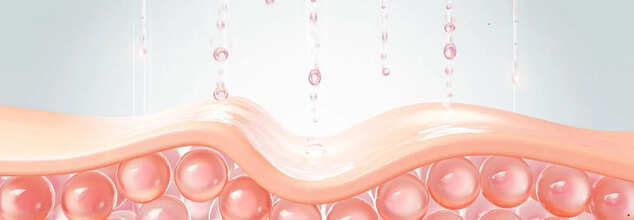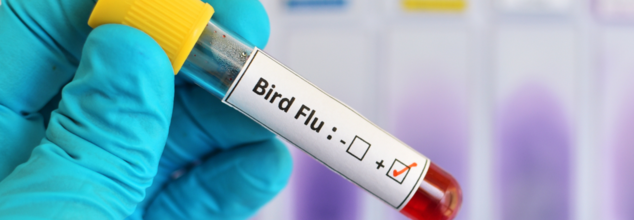
Credits: Canva
Why More Women Are Choosing To Have Kids In Their 30s Even As Fertility Drops?
For decades, the ideal age for women to become mothers was firmly rooted in the 20s—a peak period conventionally tied to prime fertility, social norms, and the onset of family life. However, recent information reveals a different picture, more women are increasingly opting to start families when they are in their 30s, although fertility does start decreasing with age. Based on initial data from the Centers for Disease Control and Prevention (CDC), women aged 30 to 34 now have more births than women in their late 20s, a big cultural and demographic change.
This article explores into what's behind this shift—from changing social values and economic considerations to medical innovations and individual empowerment.
In 2016, the CDC also said that the birth rate for women between the ages of 30 and 34 was 103 per 100,000, just barely above the 102 per 100,000 for women between the ages of 25 and 29. The mean age at which American women are giving birth to their first child has also increased to 28, from 26 only a few years earlier. This change signals something more than mere preference; it indicates greater systemic shifts within education, relations, and economic scenarios.
Women aged in their late 20s had the country's peak birth rates for over three decades. That storyline is being revised now. Authorities are attributing the change to a range of interrelated reasons—the primary among them being a decision to wait until marriage to come later in favor of a career or self-realization phase first.
Is Rise of Professional and Financial Independence the Reason?
Women of the millennial and Gen Z generations are entering a job market where education and career mobility are prized—and in many cases, a necessity for financial security. With women becoming more prevalent in positions of leadership within industries and with record-breaking levels of educational attainment, motherhood is no longer viewed as a duty of youth but as a thoughtful life choice.
Waiting until later to have a child offers the time necessary to acquire financial stability, establish a robust professional base, and even eliminate student loans. These actions are important in an environment where living costs and child-rearing—particularly in metropolitan areas—keep increasing.
Deeply connected to this movement is the shifting attitude toward marriage. The first marriage age in America has climbed to 27 for women, a drastic increase over earlier generations. As people delay marriage or pursue alternative relationship structures, the timing of having children has naturally followed suit.
Relationship expert Bill Albert of the National Campaign to Prevent Teen and Unplanned Pregnancy observes that cultural trends, such as the continued decline in teen pregnancies, are part of a larger movement toward thoughtful parenting—where a person is prepared emotionally and economically before assuming the responsibility of bringing a child into the world.
Fertility, Egg Freezing, and Reproductive Health Awareness
Although the social clock might be ticking later, biology hasn't. A healthy woman has approximately a 20% chance of conceiving in any menstrual cycle in her 20s, says the American Congress of Obstetricians and Gynecologists. Fertility, however, starts to decline in the early 30s and declines more steeply after age 37.
Despite this, women are becoming more attuned to these biological facts—and are doing something about it. Egg freezing is becoming a proactive solution, enabling women to freeze their eggs as they work toward other objectives in life. Even though the treatment is expensive (usually more than $10,000, with yearly storage charges), its popularity speaks volumes for the contemporary woman's willingness to seize control of her reproductive destiny.
Infertility Support and Treatment Options
To those who do experience fertility issues, advances in medicine have made family creation more possible than ever. The CDC reports that approximately 11% of women aged 15 to 44 have utilized infertility services, and the Mayo Clinic explains several causes—ranging from ovulation problems and PCOS to endometriosis and cancer treatment complications.
For couples seeking to become pregnant, lifestyle issues such as smoking, weight imbalance, and stress can be factors as well. Health professionals advise women older than 35 to have an evaluation after six months of failing to conceive—six months less than for younger women. With various treatments such as IVF, hormone therapy, and assisted reproductive technologies, increasing numbers of women in their 30s are having successful pregnancies despite the loss of function that comes with age.
Emotional Readiness and the Psychology of Modern Motherhood
Aside from biology and economics, there's the issue of emotional readiness. Women say they feel more grounded, self-assured, and self-aware in their 30s. They've had time to travel, learn, experience the world, and develop a strong sense of self prior to embracing the challenging and life-altering role of motherhood.
This emotional maturity will also feed through into more secure parenting arrangements and more settled family lives. More mature age at motherhood will also include women who have long-term partnership experience and securely structured support networks behind them.
The motherhood narrative is shifting. Women today are rewriting the playbook, using fertility with deliberation and knowledge, and turning conventional wisdom on its head when it comes to the "right" time to have children. While age still plays a huge role in reproductive health, it is no longer the sole factor.
As the world continues to evolve—socially, economically, scientifically, it's bound to happen more and more often that women continue to look on their 30s not as a deadline but as an opening. And as they gain ever-improved access to fertility procedures, as wider society offers their support, as medicine makes breakthrough after breakthrough, they'll have more control over motherhood than ever before to enter into when they want.

Credit: Canva
Eating Bell Peppers Can Make You Look Younger! Here Are Foods That Boost Collagen Production
Collagen is the hottest skincare trend. Both social media and retail markets are filled with collagen supplements and collagen boosting products. While there is little scientific evidence proving their sanctity, there is a range of food items that boost your collagen naturally. Before we read about them, one by one, let's first understand what is collagen and why we need it.
Explained in simple terms, collagen is a protein that provides structure, support and strength to skin, muscles, bones as well as connective tissues of the body. As we age, we produce less collagen in our skin every year. Therefore, there is a tendency toward wrinkles and thinning skin as we get older.
Here Are Foods That Boost Collagen Production
Bone Broth: While it is often considered a rich source of collagen, research suggests otherwise. A 2019 study found that bone broth typically doesn’t contain enough collagen to make a significant impact. It’s made by simmering animal bones in water to extract nutrients, including collagen.
Chicken: Collagen supplements are often made from chicken—and for good reason. Poultry is relatively high in this protein, especially in its connective tissues. If you've ever prepared a whole chicken, you've likely noticed the visible connective tissues, which make it a good source of dietary collagen. A 2022 mouse study used collagen derived from chicken bone and cartilage to relieve arthritis and inflammation. However, the collagen content can vary between parts of the bird, with thigh meat generally offering more than the breast.
Fish: Fish, like other animals, have collagen-rich bones and ligaments. Some studies suggest that marine collagen may be more easily absorbed by the body and is particularly beneficial for skin health. But while fish like tuna or salmon contribute to collagen intake, the flesh contains less collagen compared to other parts, such as the head, scales, or eyes—parts not commonly consumed.
Egg Whites: Although eggs lack connective tissue, egg whites are a good source of proline, an amino acid that plays a key role in collagen production.
Citrus Fruits: Vitamin C is crucial for collagen synthesis as it aids in the production of pro-collagen, the body’s collagen precursor. Citrus fruits such as oranges, grapefruit, lemons, and limes are excellent sources. Try incorporating them through broiled grapefruit at breakfast, orange segments in a salad, or yellow peppers in a stir-fry.
Berries: Berries like strawberries, raspberries, blueberries, and blackberries are also high in vitamin C and antioxidants, which can protect skin from damage. “Berries are also high in antioxidants, which protect the skin from damage,” Davidson added.
Tropical Fruits: Fruits such as mango, kiwi, pineapple, and guava also deliver vitamin C. Guava even provides a small amount of zinc, another nutrient essential for collagen formation.
Garlic: More than just a flavorful addition to meals, garlic may support collagen production. Garlic is high in sulfur, which is a trace mineral that helps synthesize and prevent the breakdown of collagen. However, quantity matters—substantial intake may be required to see a benefit.
Leafy Greens: Vegetables such as spinach, kale, and Swiss chard are not only nutritious but may also benefit the skin. Their green color comes from chlorophyll, known for its antioxidant properties. Some studies have shown that consuming chlorophyll increases the precursor to collagen in the skin.
Beans: Rich in protein, many beans also contain lysine—an amino acid necessary for collagen production—as well as copper, another collagen-supporting nutrient.
Cashews: They are a great snack for collagen support as they contain zinc and copper, both of which help the body produce collagen.
Tomatoes: Often overlooked, tomatoes are a good source of vitamin C and contain lycopene, an antioxidant that supports skin health.
Bell Peppers: Also rich in vitamin C, bell peppers can be a colourful and nutritious addition to salads and stir-fries, contributing to collagen synthesis.

(Credit-Canva)
Amid Conflicting Bird Flu Reports, Parents Are Struggling To Find Reliable Information For Kids Safety
As bird flu progresses in US, parents along with other concerned citizens of the country are scrambling to get information about it. Centers of Disease Control and Prevention (CDC) explains that while the current risk is low, they are working towards bettering the situation with the help of state and monitoring people with animal exposure.
It's hard for parents to know what's really going on with bird flu. A recent survey done by University of Michigan Health C.S. Mott Children's Hospital National Poll on Children's Health showed that many parents just can't find good, trustworthy information. Parents don't know who to believe or where to look which makes them feel worried and unsure about how to keep their families safe. It is important to know the real facts, but it's tough when they find varied reports everywhere. Some parents think the news is making it sound worse than it is, while others are concerned that not enough is being done.
What Are Parents Concerned About?
Many parents are feeling lost when trying to find information about bird flu. They see different stories online and on TV, and they don't know what's true. This makes them worry because they want to protect their kids. Parents mostly rely on news reports (78%) for information, while others use social media is also a common source (31%). The rest turn to the internet (19%), family and friends (15%), government agencies (11%) and health care providers (11%) .
Parents are worried about bird flu spreading to people. They're scared that animals could give it to humans, or that people could give it to each other. They're also not sure if the government can handle a big outbreak. They don't have much confidence that the government can get rid of infected animals or food. They're also worried that they won't get clear information about recalls or how to get rid of dangerous products. They just want to feel like someone is in control.
The survey also revealed that one-third of the parents took action to protect their family against the bird flu, while 22% were being more careful about the hygiene. Of them, 13% were cautious handling eggs, chicken and other meat products, 12% avoid contact with birds, and 10% avoided raw milk.
Flu viruses can infect chicken eggs by entering through the eggshell. The eggshells are smaller than the pores of eggshells, which means viruses can enter the eggs and the egg's surface will still be protected. However, it is still important to handle it safely.
As per the US Food and Drug Administration, cooking poultry, eggs and other animal products to the proper temperature and preventing cross-contamination between raw and cooked food.
Symptoms of Bird Flu to Watch for
- Pink eye
- fever
- fatigue
- cough
- muscle aches
- sore throat
- nausea
- vomiting
- diarrhea
- study or runny nose
- shortness of breath
What Can Parents Do?
To feel safer, some parents are changing their habits. They're being extra careful about washing their hands and keeping things clean. Some are also being more careful when handling chicken and eggs, making sure they're cooked properly. Some parents are even avoiding contact with birds and wild animals, just to be safe. They're also being cautious about drinking raw milk and are eating less chicken and eggs. They are trying to be proactive.
The survey revealed that parents don't feel like they can trust the government's response to bird flu. This lack of trust makes them even more worried. When people don't know what's happening, they get scared. It's important for health officials to be open and honest about what they're doing to stop the spread of the virus. They need to give clear information about how to stay safe with food. This will help parents feel more calm and confident.

Credit: Canva
Chinese Shop Offers 'Placenta Processing', Sells Capsules Made After Birth
A snack shop in southeastern China has come under fire after allegedly advertising "placenta processing" services and selling capsules made from afterbirth. The incident, which surfaced on April 6, has triggered widespread criticism and prompted an official investigation.
The controversy began when a netizen posted online about Auntie Congee’s Snack Shop, located near the Changzhou Hospital of Traditional Chinese Medicine in Jiangsu province. According to the post, the shop was involved in the processing of human placentas and selling them in capsule form, claiming health-boosting properties.
Images shared on social media revealed a signboard outside the store clearly stating “placenta processing.” The shop reportedly charged 800 yuan (US$110) if the customer did not provide their own placenta, and 300 yuan if they did. The business claimed that all placentas used were obtained from new mothers in hospitals.
The owner, who previously worked in post-partum recovery, told local media that she could also connect customers with maternity matrons. Alongside the physical snack shop, she also operated an online store named Zixuan Maternity Matron Centre.
The online platform offered various post-partum services, including maternity care, childcare, meal preparation for new mothers, placenta processing, and recovery services. Promotional materials showed the process of grinding placentas with ingredients such as ginseng powder and turning the mixture into capsules, which were labelled *ziheche*, the term used in traditional Chinese medicine for placenta.
A poster advertising the shop highlighted the supposed benefits of consuming placenta, noting it is rich in protein and nutrients. It also mentioned two processing techniques—patented freezing and traditional methods—offering customers the option to observe the process in person.
The Shop Has Been Shut Down For Rectification
On April 8, the Changzhou Municipal Health Commission informed Jimu News that the shop had been shut down for rectification. A commission staff member stated, “We are currently investigating the source of the placentas. Preliminary findings indicate that they did not come from any hospital.”
In traditional Chinese medicine (TCM), the use of placenta has long been believed to help replenish energy and nourish the blood. It is sometimes recommended for individuals experiencing fatigue, chronic coughing, or infertility. However, citing ethical and safety concerns, the Chinese Pharmacopoeia delisted placenta as an approved medicinal ingredient in 2015.
Under Chinese law, placentas are considered the personal property of the post-partum mother, who alone can decide how they are disposed of. The sale of placentas by individuals or organisations remains illegal.
The case, initially reported by the Yangtze Evening News, has sparked outrage online. One user remarked, “I really cannot believe there are people who eat placenta as food. It is so disgusting.” Another added, “It is already the year 2025! Who even believes in such nonsense? And treating women as some kind of ‘superfood’—is that not objectifying women?” A third person said, “This is not surprising at all. In the past, hospitals would ask mothers whether they wanted to keep their placentas. If they did, it was usually consumed as food.”
© 2024 Bennett, Coleman & Company Limited

